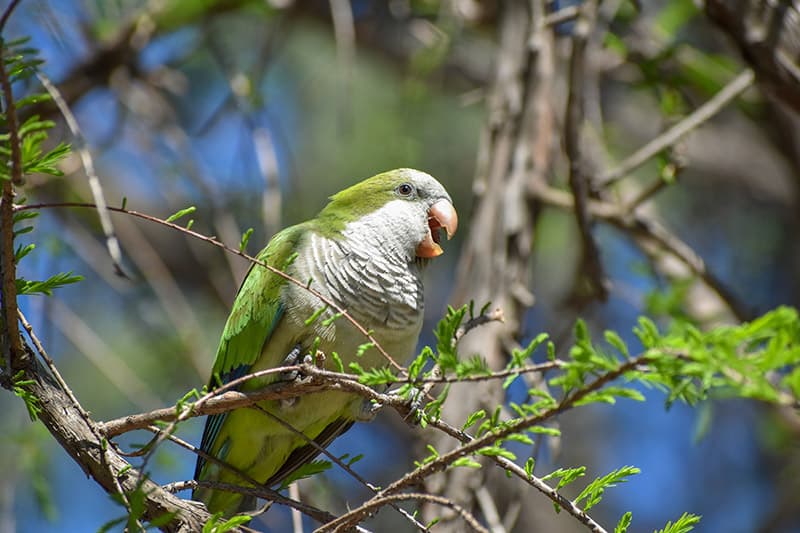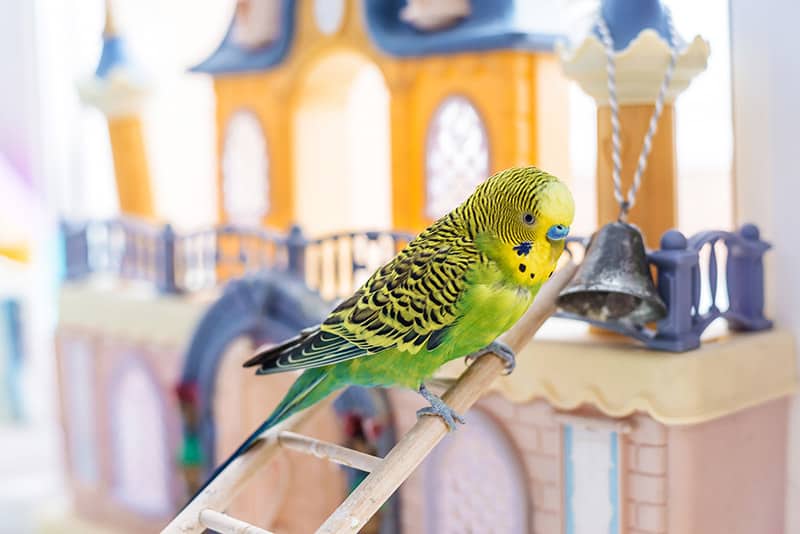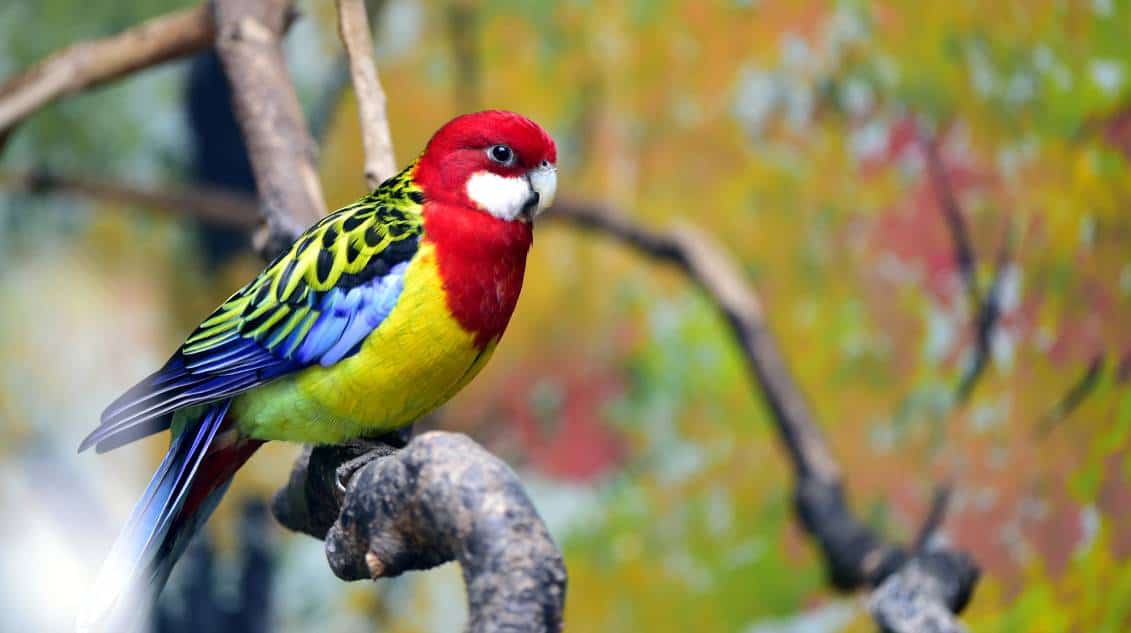Parakeets belong to the parrot family and the word “parakeet” means long tail. They are small to medium sized parrots with long, tapered tail feathers rather than having the stockier bodies and more square-shaped tails found on larger parrots.
These colorful, graceful birds are full of energy. Being flock birds, parakeets are very social with each other and with people. They love attention, make wonderful pets, and are some of the most popular pet birds. There are many different types of parakeets and many are very colorful. The Budgie or Budgerigar, which is called “Parakeet” in the United States, is one of the best-known parakeets. However it is just of more than 120 species and sub-species.
These small parrots are not only intelligent, but they have outgoing personalities and are very social. Parakeets adapt quickly to their cage and can be quite playful. They are very dexterous and are constantly on the go. To keep them happy and healthy they need a stimulating environment with lots of activities, including climbing areas and chewing toys. Because Parakeets are social birds that live in flocks in the wild, keeping more than one is important for their well-being. They will also form a close, loving bond with their human flock, and become a great friend and companion.
The bird guides for each type of parakeet species provides in-depth information about living with them. Housing, care, and feeding requirements are covered along with each bird’s behaviors and activity requirements. Tips for handling and training parakeets are also included, along with breeding information.
- For more about Parakeets see: Parakeets: Bird Care and Information for All Types of Parakeets
Parakeets
Indian Ringneck Parakeet
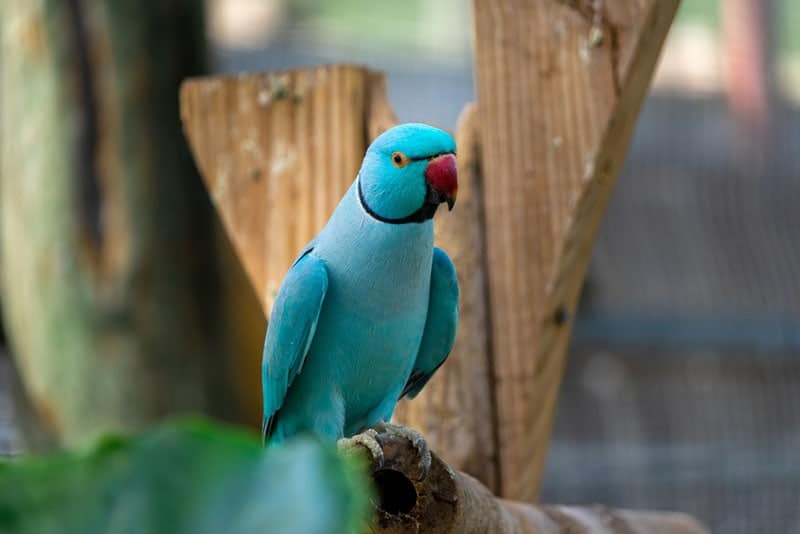
Psittacula krameri manillensis
Parakeet Origin
Parakeets are found all around the world. There are many different types of parakeet species found in each region, though the largest diversity is found in Australia and in the New World of Central and South America. Australia has over 30 species of some of the most remarkable colored parakeets. There are over 27 species found in the Americas, with numerous subspecies as well.
Like the exotic parakeets from the Americas, the African parakeets inhabit tropical and subtropic regions. The island of New Zealand and it neighbors also have several exotic parakeets, and some of the most unique characteristics are found in those from Asia. Asian parakeets demonstrate the widest range of pet quality, with some being affectionate and may talk, to others that do not. In general terms these parakeets are said not to be quite as playful as other kinds of parakeets, and some may not be as handleable.
Pictured above is Bobby, a male Plum-headed Parakeet. The Plum-headed female has a gray head while the Plum-headed male has red or plum-colored head. This is just one example of the extraordinary diversity found in the exotic parakeet family of birds.
Parakeet History
Parakeets are a part of ancient history. They have been used as food and then kept as exotic pets over hundreds of years. These are some very early historical accounts:
- The Alexandrine Parakeet was named for Alexander the Great, who at the time of his Indian conquests around 327 BC, brought parrots to Europe from India.
- The earliest reference to parakeets in literature came from Ctesias of Cnidus, a Greek physician and historian, in a work called “Indica” dated back to 367 BC, that included his account of India. He described a bird that could talk in an “Indian” language, was about the size of a Sparrow-Hawk, and was blue-green and vermilion in color with a purple face and black beard. This bird is now commonly known as the Plum-headed Parakeet Psittacula cyanocephala, like the one pictured above.
- The Roman Scholar, Pliny the Elder, wrote one of the first “bird care” books in 72 A.D. In it he describes caring for and training parakeets, including teaching them to talk.
In the 1400’s, when the New World was discovered, parrots began to arrive in Europe from the Central and South America and became quite popular. It was in the 19th century that European explorers and naturalists began further expanding the knowledge of birds as well as many other creatures. A romantic period ensued where birds became highly favored by British nobility and royalty. The late 1800’s saw volumes of literature on all sorts of exotic birds and parrots. Central and South American parrots became popular in the United States, as they were more readily available here.
Interest in parrot keeping continued in the United State throughout the 1900’s. Parrots of all types arrived in abundance into the United States. A few parakeet species, including the Green Conure, were bred in the 1930’s. In the 1960’s even more species began to be produced in captivity, including the Sun Conure.
The latter 1900’s saw a large increase in aviculture and captive breeding. Concern for many species threatened with extinction resulting from deforestation and habitat destruction began to create concern around the world. In 1979 Herbert R. Axelrod, a renowned tropical fish expert and publisher of pet books, attended a meeting sponsored by the United Nations on endangered species. There he proposed that rare birds be placed in captive breeding to prevent the extinction of many rare species as a sensible approach to the problem. This helped open the doors to importation of many parrot species previously not available. Only Australia persisted in not allowing exportation. Today, although bird importation is greatly restricted, many parakeet species are successfully bred in captive and readily available.

Parakeet Information
All parakeets are parrots, though not all parrots are parakeets. Parakeets are small parrots consisting of many different unrelated species found across the globe from Australia to Asia, the subtropics of Africa to Central and South America. Like their larger relatives, they belong to the Order Psittacine (or Psittaciformes) of hook-billed birds. Under this order they are part of a large Family known as Psittaccidae, or “True Parrots” and placed in the subfamily Psittacinae of “typical parrots and allies”. Besides Parakeets, the Psittacinae subfamily family consists of 7 tribes, and includes a variety of familiar parrots like Macaws, African Greys, Amazon parrots, Lovebirds, and more.
The name parakeet can be confusing. This is a term used in aviculture, it is not a scientific name nor a representation of their taxonomy. In fact, there is no scientific designation, which recognizes the size of a bird as important enough to make it a “natural” group – scientifically. It is a common designation with a lot of latitude. You will occasionally find a larger parakeet species called a parakeet, while at the same time others will refer to it as a parrot, and both are correct.
- What are Parakeets?
Parakeet is a term that refers to a small to medium sized parrot. They range in size from the smaller ones being only about 7″ (18 cm) while the largest reach up to 18″ (45 cm) in length from the top of the head to the tip of the tail. One of the distinguishing characteristics of this group of parrots is the tail. They have long, tapered tail feathers which are about half of their body length. - What are not Parakeets?
Although parakeets are small to medium sized parrots, this designation does not apply to all small parrot species. Because birds in the parakeet group have long, tapered tail feathers, it excludes other small parrots with squared tails like those found on Lovebirds. Along with lovebirds there are a number of other popular types of small to medium sized parrots that are not parakeets. Some of these are Caiques, Lories and Lorikeets, Eclectus, Pionus, and Poicephalus to name a few. Cockatiels are also not parakeets, as they belong to the Cockatoo family Cacatuidae, rather than the true parrot family Psittaccidae. - What are Conures?
All conures are parakeets, but not all parakeets are conures, and several parakeets found in the Americas do not belong to the conure group. Conures are a unique group of parakeets consisting of at least 105 species and subspecies. Some parrots in the conure group are commonly referred to as either a conure, or as a parakeet, and both are correct.
The name conure, derived from Conurus, refers to a group of long-tailed parakeets found only in Central and South America. Conurus is an invalid scientific name formerly given to the Aratinga Genus. The Aratinga genus contains very popular parrots like the Sun Conure and the Jenday Conure. Conorus comes from the Greek words cone (cone) and ourus (tail-bearing). It is not used today.
We follow the designations ascribed by Joseph M. Forshaw, author of “Parrots of the World”, putting those he calls parakeets here and those he designates as Conures in their own group.
See the conure parakeets here: Conure Parrots, Types of Conures
Types of Parakeets
Parakeets in the wild live in many diverse habitats. There are hundreds of different types of parakeets found in a wide variety of sizes and colors. They vary in size from about 7″ up to 18″ (18-45 cm) in length. The average life span of parakeets is unknown on most species. It is known that parakeets live longer in captivity than they do in the wild, and larger birds live longer than smaller birds. In general, smaller parakeets can live up to about 8 to 10 years, while some of the larger parakeets have been known to live for 25 years or more.
With such a diverse collection of birds it is not surprising that their physical descriptions are just as diverse. However there are some general features all parakeets share.
Characteristics of all types of parakeets
- Parakeets generally have slender bodies and long, tapered tails.
- The colors of parakeets can be very rich. Each species has plumage with its own color palate. Colors can range from rich greens to bright yellows, reds, oranges, blues, violets, and more.
- Most parakeets have an unfeathered cere at the top of their beak that surrounds their nostrils. The coloration of the cere on some parakeets is different for the male and the female making it easy to sex them. This is readily seen on the popular American Parakeet, the Budgie.
- The beak of a parakeet is multi-faceted. They have a hooked upper bill that they use to climb, hold things, or to dig. They also use their beak to chew, break seeds, and peel fruit.
- Each type of parakeet has its own set of calls, but all parakeets are fairly intelligent birds and can learn to “talk”. Many are quite adept at mimicking sounds they hear and some will repeat words, phrases and even whistle.
- All types of parakeets are naturally active and will stay very busy. They will always be climbing and flying from perch to perch. They will intently chew on toys and anything else that they can reach.
Types of Parakeets by Tribe
Exotic parakeets are found throughout Australia, Asia, tropical and subtropic regions of Africa, Central and South America. Although all parakeets belong to the subfamily Psittacinae, they are found in various parrot tribes.
- Tribe Arini – American parakeets
This tribe consists of the American psittacines, a group described as Neotropical parrots, which consists of over 155 species and subspecies. They are found from Mexico, extending south through Central and South America. This group contains not only parakeets, but also a variety of other favorite parrots including Macaws, Caiques, and Amazon parrots. The parakeets in this tribe can be quite colorful and are known to make exceptional pets. They are not quite as intense in color as many of the Australasian parakeets.
- Tribe Platycercini – Australasian parakeets
This tribe consists of the 34 – 40 Australasian psittacines, a group described as Broad-tailed parrots. This tribe contains over are over 30 parakeet species from Australia, many of which are very colorful. New Zealand has three parakeet species and a few subspecies, and there are also several parakeet species in New Caledonia, and neighboring islands.
- Tribe Psittaculini – Asian parakeets, African parakeets
This tribe consists of consists of Asian parrots, as well as some African and Madagascar parrots. It contains 12 genera and about 170 species and subspecies. Besides parakeets, there is also a variety of other types of parrots including the popular Lovebirds and Eclectus.
Asian Parakeets are somewhat unique. Their pet quality can be quite diverse from one individual to the next. Some will be quite affectionate and may learn to talk, while another will not. Some are very trainable and can be handled; yet there are others that won’t. They are often not as playful in general as other species of parakeets but there are many exceptions that have made excellent pets.
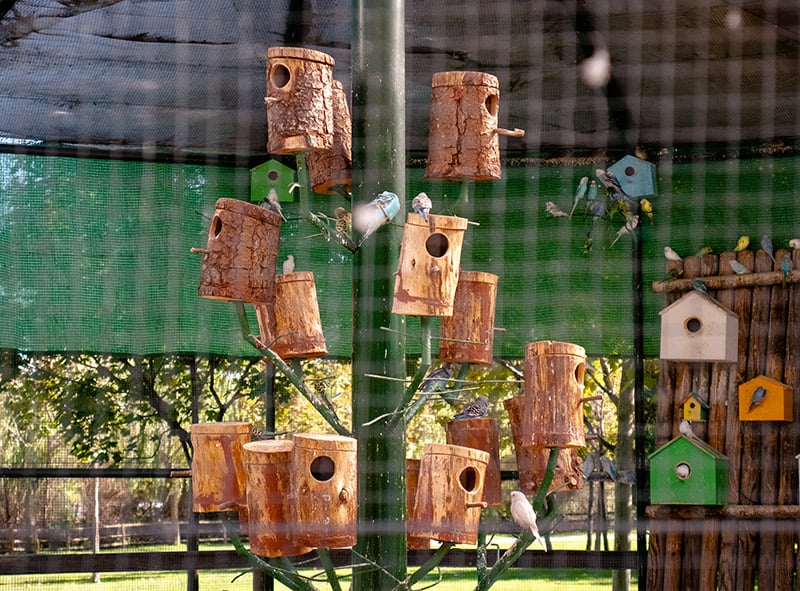
Parakeet Behavior
Parakeets have all the great qualities of the larger parrots; they are active, intelligent, very social, and have the ability to talk. But they have a few unique characteristics of their own. Because they are smaller parrots, they require less space and are generally less expensive than large parrots. Depending on size, in a good environment parakeets can live up to 10 years for a smaller bird, with a lifespan of 25 years or more for the larger species.
Parakeets are very social, active, and outgoing birds. They adapt well to captivity and will adjust easily to their cage or aviary. They are intelligent little birds and are generally easy to tame. They will bond to their keepers, and may soon begin to mimic their sounds. They are relatively good at learning to talk and adept at learning tricks.
These parrots enjoy interaction with people, and just like human companionship in general. They can mix very successfully with children once they get used to the child. The same is true for other family pets; they can do very well, but be sure to use caution until you are certain they will get along. Parakeets also enjoy the companionship of other birds, and do best when kept in pairs or groups. A single bird can become restless or distressed without companionship, and may start demonstrating undesirable behaviors like feather plucking or become depressed.
In the wild, parakeets live in colonies, but form monogamous pairs. Most parakeets are fairly easy to breed in captivity, and many can be sexed by sight. Once a pair is harmonious, many types of parakeet will bond with their mate for life.
NOTE: When choosing a parakeet book, there is often only one type of parakeet included in many of them, the Budgie or Budgerigar – which is the very popular American “Parakeet”. To find books on other types of parakeets look for a particular type of parakeet, or books that cover a larger group, such as Long-Tailed Parakeets or Australian parakeets. Most species can also be found in parrot books.
Featured Image Credit: Light and Vision, Shutterstock
